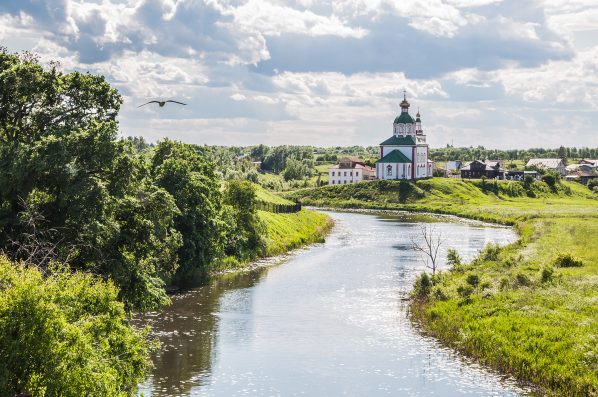Archaeologists Found Two 11th Century Skeletons Buried With Ancient Battle Axes And Equestrian Equipment In Russia

While doing fieldwork at a medieval site in Russia, archaeologists unburied two human skeletons, battle axes, and equestrian equipment from a vast cemetery.
The site is known as the Gnezdilovo burial ground. It was discovered in 1851 in the town of Suzdal, which is located northeast of Moscow.
Excavations have taken place at the seven-acre site since 2020. According to the Institute of Archaeology of the Russian Academy of Sciences, archaeologists, in collaboration with the State Historical Museum, surveyed around 50 undisturbed burials within the cemetery. Many finds have been made at the cemetery, such as coins, jewelry, and weapons.
One burial, known as grave number 59, contained the remains of a 35-to 40-year-old man. He was buried with several artifacts, including a knife, a broken ceramic vessel, a bronze belt buckle in the shape of a lyre, which is a stringed musical instrument, and a metal battle axe.
The axe had a semicircular notch at its base and a “small hammer” on the other end. This type of axe was popular during the 11th and 12th centuries and was commonly associated with the nomadic cultures of the steppes.
Similar ones have been found in Volga Bulgaria, a former state that is now part of Russia. They began to be used in Russia in the 10th century.
Next to the man’s plot, there were the remains of another man, designated as grave number 49, who was between 25 and 30-years-old at the time of his death.
His grave contained a “complex wooden burial structure” that was put together without the use of iron nails—a technique that highlighted the craftsmanship of the period—a similar battle axe, a lock, a lyre-shaped buckle, a knife with remnants of a sheath, and equestrian equipment, including stirrups and a buckle for tightening a saddle.
Additionally, a number of different weights were unearthed. They may have been used to weigh coins that were collected as taxes.

alesinya7 – stock.adobe.com – illustrative purposes only
The identities of the two men are unclear, but it is believed they were elite members of society and likely performed duties related to finances, such as tax collection.
“Joint finds of weapons, scales, and weights in men’s burials are convincingly interpreted as an indication of the ownership of these burials to persons who performed fiscal functions, which involved weighing coins collected as taxes,” the researchers said.
They added that the unusual appearance of the burials, the size of the wooden funerary structure in the second man’s grave, and the presence of equestrian equipment all pointed to their high societal status.
Overall, the site provided some hints about the military culture and social structure in northeastern Russia.
It also sheds light on how the old Russian elite were Christianized, which happened at rapid rates, primarily during the 11th century.
Sign up for Chip Chick’s newsletter and get stories like this delivered to your inbox.
More About:News





